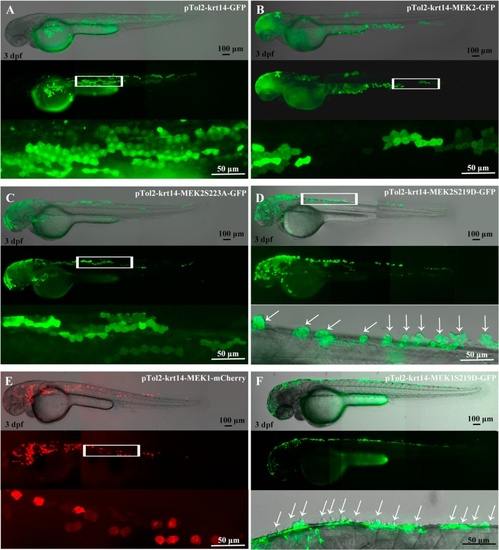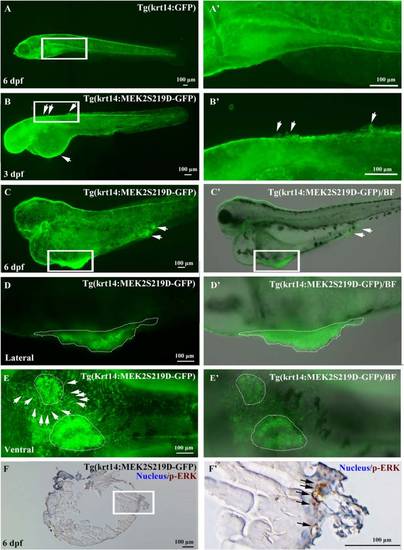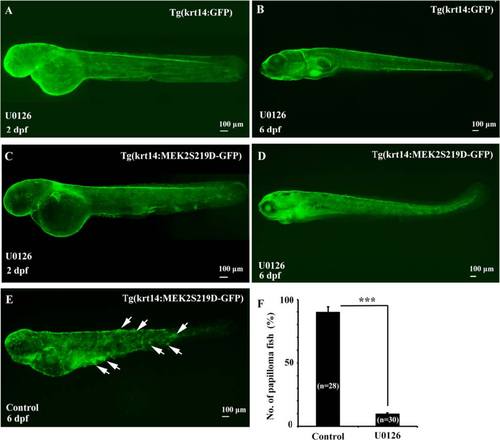- Title
-
Activation of MEK2 is sufficient to induce skin papilloma formation in transgenic zebrafish
- Authors
- Chou, C.M., Chen, Y.C., Su, S., Chen, G.D., Huang, K.Y., Lien, H.W., Huang, C.J., Cheng, C.H.
- Source
- Full text @ J. Biomed. Sci.
|
Transient expressions of MEK1 and MEK2 driven by the krt14 promoter induced papillae formation in skin cells. Lateral view of pTol2-krt14-GFP (a), pTol2-krt14-MEK2-GFP (b), pTol2-MEK2S223A-GFP (c), pTol2-krt14-MEK2S219D-GFP (d), pTol2-krt14-MEK1-mCherry (e), and pTol2-krt14-MEK1S219D-GFP (f) plasmids, which were microinjected into 1-cell stage of zebrafish embryos and visualized at 3 days post-fertilization (dpf). The arrow indicates skin cell papillae and budding in the upper epidermis. The upper panel is a fluorescent image. The middle panel is merged fluorescent and bright-field images. The lower panel is an enlargement of the white box in the middle panel |
|
Skin tumor formation in Tg(krt14: MEK2S219D-GFP) zebrafish. Skin cells proliferated and formed papilla from 3dfp (b, B′, white arrow) on the yolk skin in Tg(krt14: MEK2S219D-GFP) embryos to form a skin tumor at 6 dpf (c, and C′; lateral view, d and D′, white-dots area; ventral view, e and E′, white-dots area). Tg(krt14:GFP) embryos had developed normal skin cells at 6 dpf (a, A′). An immunohistochemical experiment was used to detect ERK phosphorylation in skin tumors. p-ERK was detected by a p-ERK monoclonal antibody and visualized by DAB (brown). Nuclei were counterstained with hematoxylin (blue) (f, F′) EXPRESSION / LABELING:
PHENOTYPE:
|
|
The MEK inhibitor, U0126, inhibited skin tumor formation in Tg(krt14: MEK2S219D-GFP) embryos. Tg(Ka14:GFP) embryos were observed by treated with 50 µM U0126 at 2 dpf (a) and 6 dpf (b). Tg(krt14: MEK2S219D-GFP) embryos were observed by treated with 50 µM U0126 at 2 dpf (c) and 6 dpf (d) or treated with DMSO at 6 dpf (e). The white arrow indicated skin papilloma. f The frequency of tumor formation in Tg(krt14: MEK2S219D-GFP) embryos incubated with DMSO (Control) or U0126 |



